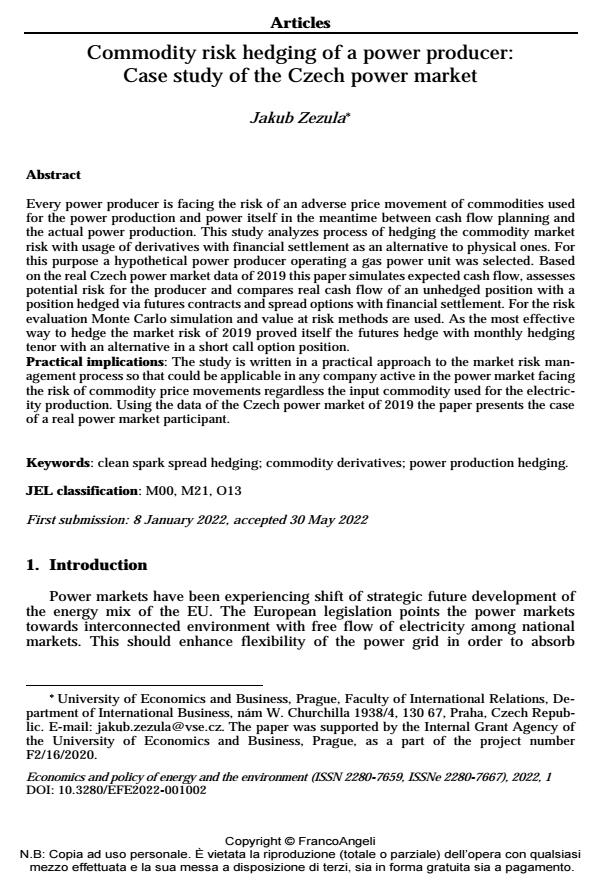Commodity risk hedging of a power producer: Case study of the Czech power market
Titolo Rivista ECONOMICS AND POLICY OF ENERGY AND THE ENVIRONMENT
Autori/Curatori Jakub Zezula
Anno di pubblicazione 2022 Fascicolo 2022/1
Lingua Inglese Numero pagine 16 P. 17-32 Dimensione file 214 KB
DOI 10.3280/EFE2022-001002
Il DOI è il codice a barre della proprietà intellettuale: per saperne di più
clicca qui
Qui sotto puoi vedere in anteprima la prima pagina di questo articolo.
Se questo articolo ti interessa, lo puoi acquistare (e scaricare in formato pdf) seguendo le facili indicazioni per acquistare il download credit. Acquista Download Credits per scaricare questo Articolo in formato PDF

FrancoAngeli è membro della Publishers International Linking Association, Inc (PILA)associazione indipendente e non profit per facilitare (attraverso i servizi tecnologici implementati da CrossRef.org) l’accesso degli studiosi ai contenuti digitali nelle pubblicazioni professionali e scientifiche
Every power producer is facing the risk of an adverse price movement of commodities used for the power production and power itself in the meantime between cash flow planning and the actual power production. This study analyzes process of hedging the commodity market risk with usage of derivatives with financial settlement as an alternative to physical ones. For this purpose a hypothetical power producer operating a gas power unit was selected. Based on the real Czech power market data of 2019 this paper simulates expected cash flow, assesses potential risk for the producer and compares real cash flow of an unhedged position with a position hedged via futures contracts and spread options with financial settlement. For the risk evaluation Monte Carlo simulation and value at risk methods are used. As the most effective way to hedge the market risk of 2019 proved itself the futures hedge with monthly hedging tenor with an alternative in a short call option position. Practical implications: The study is written in a practical approach to the market risk man- agement process so that could be applicable in any company active in the power market facing the risk of commodity price movements regardless the input commodity used for the electric- ity production. Using the data of the Czech power market of 2019 the paper presents the case of a real power market participant.
Parole chiave:clean spark spread hedging; commodity derivatives; power production hedging.
Jel codes:M00, M21, O13
Jakub Zezula, Commodity risk hedging of a power producer: Case study of the Czech power market in "ECONOMICS AND POLICY OF ENERGY AND THE ENVIRONMENT" 1/2022, pp 17-32, DOI: 10.3280/EFE2022-001002